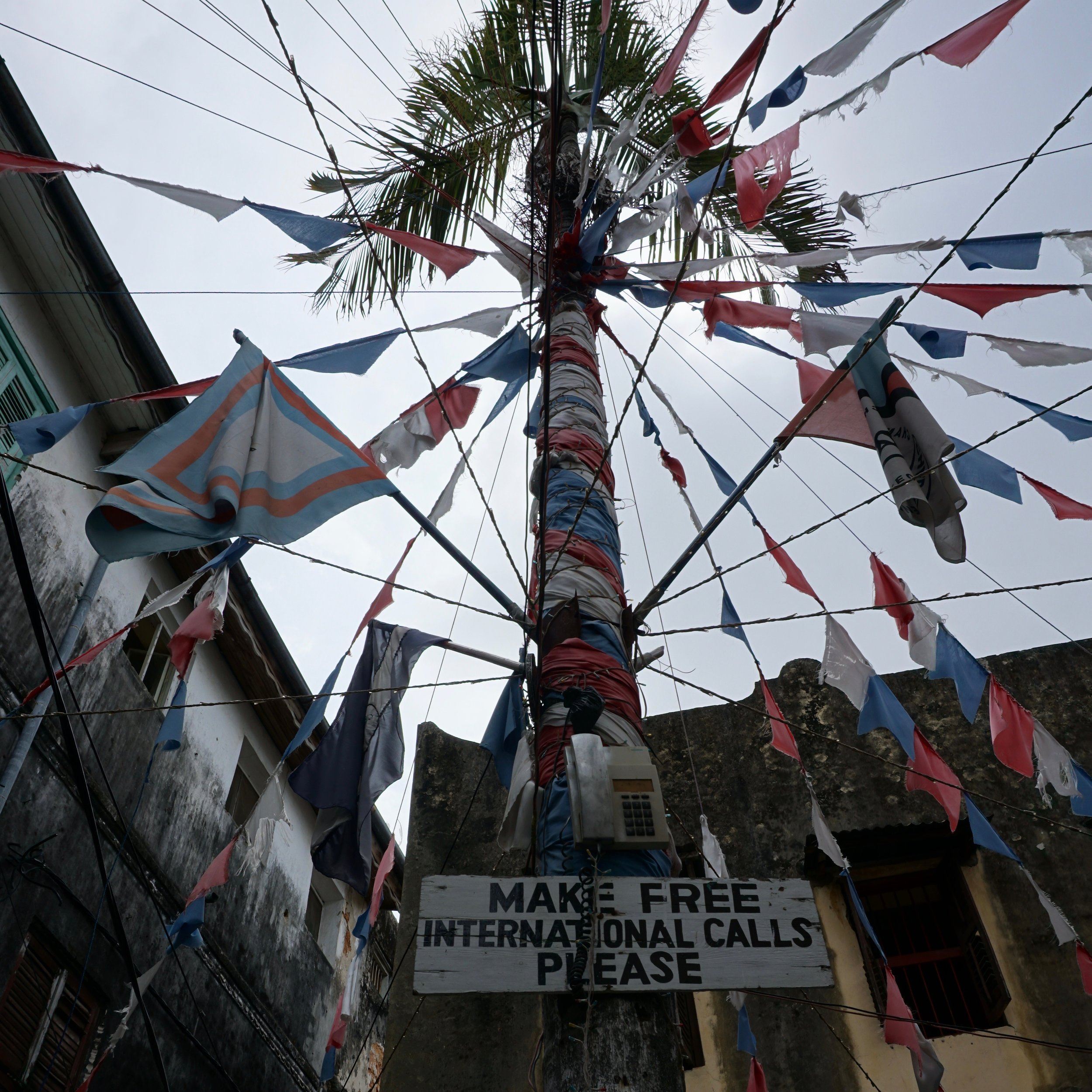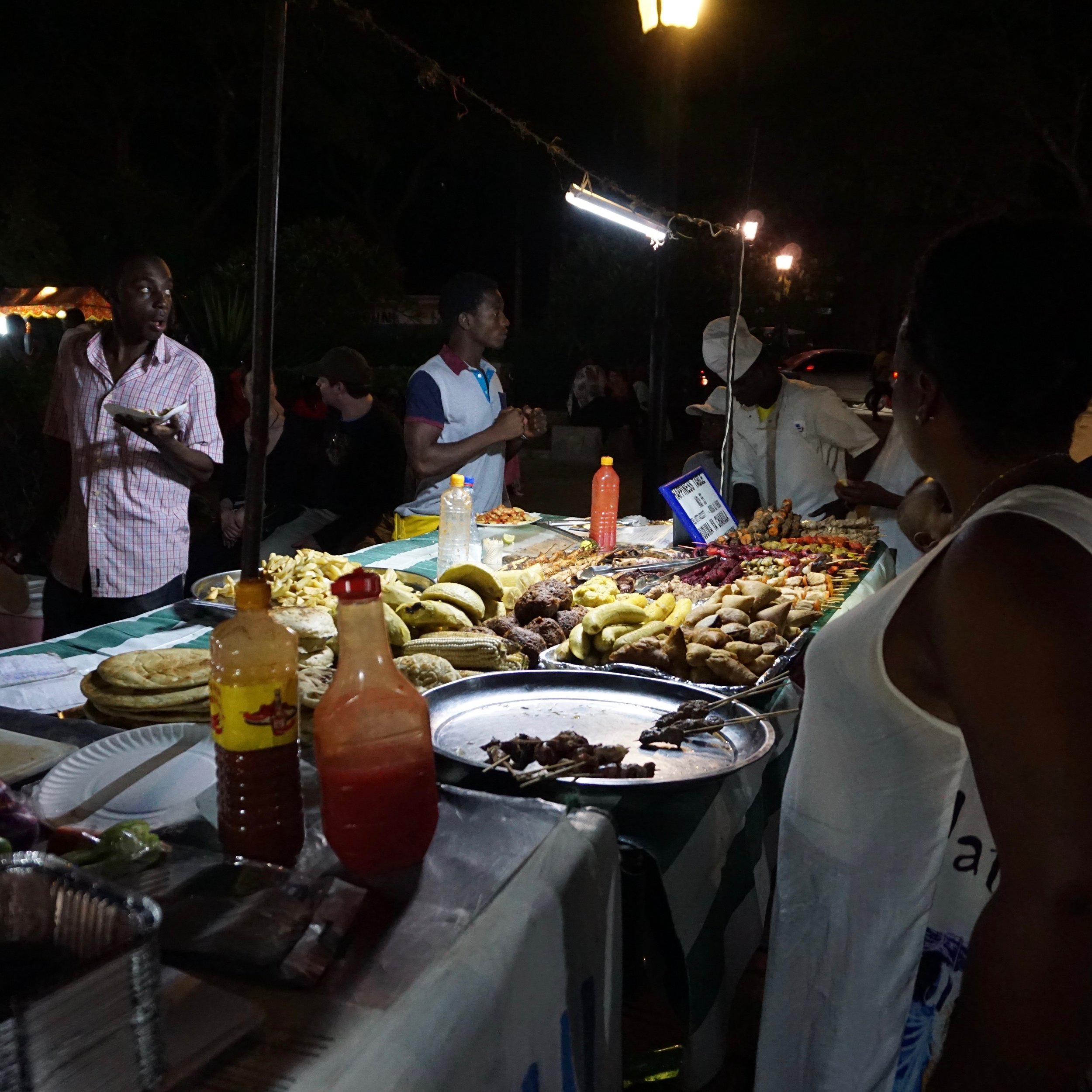After climbing Kili and spending a few days in Moshi, we set off for the island of Zanzibar, just 30 miles off the coast of Tanzania.
Wandering through Stone Town
Stone Town is one of those places where it makes you feel like you’ve gone back in time… what we imagine the mid-1800s would have looked like. Stone Town gets its name from the stone-faced homes and buildings that fill the city. The buildings aren’t tall and the city isn’t wide – you can walk across in 15 minutes or so. The roads are barely big enough for a single car driving in one direction. There are motorbikers everywhere so you have to be on guard walking around corners. During the day, people hang on the beach while shopkeepers try to lure tourists inside. At night, the streets are darker, there’s a wonderful night market, but away from that, the day’s bustle has largely dispersed.
RELAXING IN NUNGWI
Zanzibar is surrounded by seemingly endless beautiful beaches. We spent a few days at the northern tip of the island to get our feet back under ourselves. It was a great opportunity to zone out with beautiful views and explore the local villages.
Insane Drivers
So driving around this island is wild. We had a 1.5 hour car ride from the airport to our hotel and we were beyond uncomfortable. We kept telling our driver, “We’re in no rush. We don’t care how quickly we get there. Let’s just slow down and be safe.” It didn’t change anything.
The roads are narrow, windy, and apparently without speed limits. Overstocked trucks were whipping by us, missing our car by what seemed no more than 6 inches. After this first ride, we demanded that our taxi drivers slow down.
Some Zanzibar History
We've learned a lot about Zanzibar's history since we arrived here. Zanzibar changed hands a lot over the years. It's ideally situated in the Indian Ocean and served as a central hub for trade between East Africa and the Middle East. The Dutch, the Arabs, and the British all took over rule at one point or another. The British eventually ended the slave trade through a ban, but it was very difficult to enforce. Especially when Dutch, Portuguese and American ships continued to pass through and violate the ban. When Britain ended the Protectorate in the 1960s, a lot of the Zanzibar’s institutions were nationalized. Clove production had been very profitable for the island, but taxes were making it so that they were no longer competitive on a global scale.
We visited two museums in Stone Town. One was the House of Wonders, which got its name because it was the first building on the island with electricity and an automated lift. Like Stone Town, you feel like you step back in time. But unfortunately, time has taken its toll. The building is very run down now and we doubt that it will still be standing in 20 years. We learned that it was the site of the world's shortest war, the Anglo-Zanzibari War – it was fought against the British in 1896 and lasted a mere 38 minutes. The second museum was the Palace Museum, which contained a lot of the same Zanzibari history as the House of Wonders. This building was also very worn down. We whipped through this one because there wasn’t much to see (and Annie was getting tired). The ultimate time travel experience still remains the Dennis Sever House in London.







































